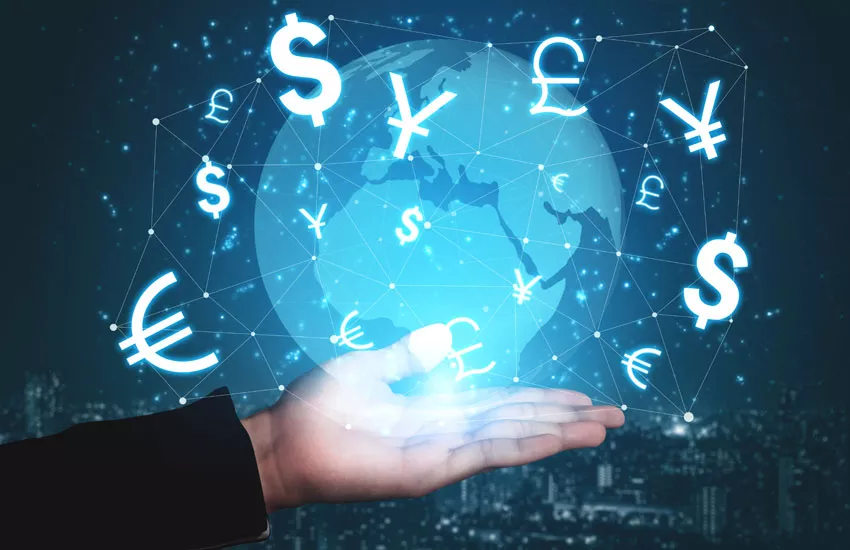The United States Dollar (USD) is one of the most widely recognized currencies in the world. Known for its stability and strength, the USD plays a central role in the global economy. While it is the official currency of the United States, many other countries have adopted the dollar as their official currency. This phenomenon, known as “dollarization,” allows countries to stabilize their economies, attract foreign investment, and improve economic growth.
In this article, we will explore the countries that use the US dollar as their official currency, the reasons behind their decision to dollarize, and the advantages and challenges of using the USD instead of a local currency.
What is Dollarization?
Dollarization refers to the process by which a country adopts a foreign currency, typically the US dollar, in place of or alongside its own currency. This practice can happen in one of two ways:
Full Dollarization: A country adopts the US dollar as its sole legal tender, completely replacing its national currency. In this case, the US dollar becomes the primary medium of exchange, and the country no longer issues its own money.
Partial Dollarization: In some countries, the US dollar is used alongside the national currency, especially for certain transactions. This often happens in countries experiencing hyperinflation or economic instability, where the US dollar is viewed as more reliable.
Why Do Countries Adopt the US Dollar?
There are several reasons why countries choose to dollarize their economies. Some of the main factors include:
Stability: The US dollar is a stable currency and a global reserve currency. Countries that face high inflation or economic instability may adopt the dollar to protect their economies from devaluation and hyperinflation.
International Trade: Many international transactions, especially those related to commodities like oil and gold, are priced in US dollars. Using the USD can facilitate trade and attract foreign investment.
Interest Rates: Countries that dollarize may benefit from lower interest rates, as the US dollar is seen as a safer investment compared to local currencies in times of economic uncertainty.
Debt Management: Dollarization can help governments manage debt, particularly if they owe large amounts of money in US dollars. By using the USD, countries can reduce the risk of currency devaluation and make it easier to service their debt.
Tourism: Countries that adopt the US dollar often benefit from increased tourism. Travelers are more likely to visit countries that use a currency they are familiar with, and using the USD can make transactions smoother for foreign visitors.
Countries That Use the US Dollar as Their Official Currency
While the US dollar is widely used in many countries, it is the official currency in several nations. Below is a list of countries that have fully or partially dollarized their economies.
1. Ecuador
Ecuador is one of the most well-known examples of a country that has fully dollarized its economy. In 2000, Ecuador made the decision to replace its currency, the sucre, with the US dollar. The country had been experiencing severe inflation and a banking crisis, and dollarization was seen as a way to stabilize the economy.
Since adopting the US dollar, Ecuador has seen a reduction in inflation and interest rates, making the economy more stable. However, dollarization has also limited the government’s ability to control monetary policy, as it no longer has the power to print its own money.
2. El Salvador
In 2001, El Salvador adopted the US dollar as its official currency. The decision to dollarize came after a period of high inflation and economic instability, and the government hoped that using the dollar would improve economic growth and attract foreign investment.
Dollarization has helped stabilize the Salvadoran economy, but it has also had some drawbacks. The country has limited control over monetary policy, and its reliance on the US dollar means that it is vulnerable to changes in US interest rates and inflation.
3. Panama
Panama has used the US dollar as its official currency since 1904. The country does not have its own central bank, and the use of the dollar has been crucial for its economic stability. Panama’s economy is heavily dependent on international trade, particularly due to the Panama Canal, which is a major global shipping route.
The country has enjoyed economic stability due to the use of the US dollar, and Panama’s banking sector is well-developed, attracting international investors. However, like other dollarized countries, Panama has limited control over its monetary policy.
4. Zimbabwe
Zimbabwe adopted the US dollar in 2009 after a period of hyperinflation that saw the Zimbabwean dollar become virtually worthless. The country had experienced one of the worst cases of hyperinflation in history, and the government was forced to abandon its currency.
Since adopting the US dollar, Zimbabwe has seen a reduction in inflation and economic stability. However, the country still faces significant economic challenges, including high unemployment and a lack of foreign investment.
5. East Timor (Timor-Leste)
East Timor, or Timor-Leste, adopted the US dollar as its official currency after gaining independence from Indonesia in 2002. The country had no established currency system, and the government decided to use the US dollar to stabilize the economy and facilitate international trade.
Since adopting the US dollar, East Timor has experienced economic growth, but it still faces challenges related to poverty, unemployment, and a reliance on oil exports.
6. The Federated States of Micronesia
The Federated States of Micronesia (FSM) is a group of islands in the Pacific Ocean that uses the US dollar as its official currency. The FSM is a compact of free association with the United States, which means that the country has strong economic ties with the US.
The use of the US dollar has helped stabilize the FSM’s economy and facilitate trade with the US and other countries. However, the FSM faces challenges related to its small economy and reliance on foreign aid.
7. The Marshall Islands
The Marshall Islands, a Pacific island nation, also uses the US dollar as its official currency. Like the Federated States of Micronesia, the Marshall Islands has a compact of free association with the United States.
The country benefits from the use of the US dollar for trade and investment, but it also faces challenges related to its small economy, poverty, and limited resources.
8. Palau
Palau is another Pacific island nation that uses the US dollar as its official currency. The country is in a compact of free association with the United States, and the use of the US dollar has contributed to the country’s economic stability.
While Palau has seen economic growth due to its tourism industry, it still faces challenges related to its small size, reliance on imports, and vulnerability to natural disasters.
9. British Virgin Islands
The British Virgin Islands (BVI) is a British Overseas Territory located in the Caribbean. While the official currency is the US dollar, the BVI has a unique relationship with the UK. The territory benefits from the use of the US dollar for trade and investment, but it also enjoys certain advantages as a British Overseas Territory.
The BVI’s economy is centered around tourism and financial services, and the use of the US dollar has helped stabilize the economy.
10. Caribbean Netherlands (Bonaire, Sint Eustatius, and Saba)
The Caribbean Netherlands, which consists of the islands of Bonaire, Sint Eustatius, and Saba, uses the US dollar as its official currency. These islands are special municipalities of the Netherlands and have a close relationship with the Dutch government.
The use of the US dollar in these islands helps facilitate trade with the United States and other Caribbean nations.
Advantages of Using the US Dollar
For countries that have adopted the US dollar as their official currency, there are several advantages:
Stability: The US dollar is considered one of the most stable currencies in the world. Countries that use the USD can benefit from its stability, reducing the risk of inflation and currency devaluation.
Lower Interest Rates: Dollarized countries often experience lower interest rates due to the stability of the US dollar. This can make borrowing cheaper for businesses and consumers.
Improved Trade: The US dollar is the world’s most widely used currency for international trade. Countries that use the USD can engage in trade more easily with other nations.
Increased Foreign Investment: The use of the US dollar can attract foreign investment, as investors are more likely to invest in countries with stable currencies.
Challenges of Using the US Dollar
Despite its advantages, there are some challenges that countries face when using the US dollar:
Limited Control Over Monetary Policy: Countries that adopt the US dollar lose the ability to control their own monetary policy. This means that they cannot print money or adjust interest rates to suit their economic needs.
Dependence on the US Economy: Dollarized countries are heavily influenced by the economic policies of the United States. Changes in US interest rates or inflation can have a direct impact on these countries.
Potential for Economic Disadvantages: If the US dollar appreciates significantly, it can make exports from dollarized countries more expensive and less competitive in the global market.
Conclusion
The US dollar is used as the official currency in several countries around the world, including Ecuador, El Salvador, Panama, Zimbabwe, and various Pacific island nations. Dollarization can bring economic stability, lower interest rates, and increased foreign investment. However, it also comes with challenges, such as limited control over monetary policy and dependence on the US economy.
For countries facing economic instability, adopting the US dollar can provide a solution to inflation and currency devaluation. However, dollarized nations must carefully manage their economies to ensure that they can still achieve long-term growth and stability.
In conclusion, the decision to use the US dollar as the official currency can offer both opportunities and challenges. While it provides stability and global trade advantages, countries must also recognize the trade-offs in terms of economic sovereignty and vulnerability to external economic forces.
Related topics:


























